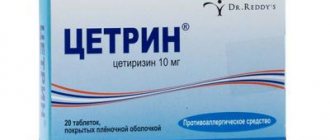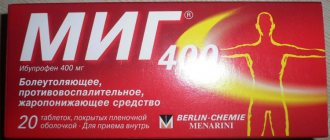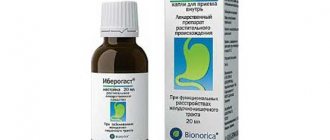Release form and composition
Berlipril is available in tablet form. The main active substance of the drug is enalapril maleate, the dosage of which is indicated in the name of the drug and is 5, 10 or 20 mg. Berlipril tablets, depending on the content of enalapril in them, have a white, light brown, pale pink color.
Additional components included in the drug Berlipril: lactose monohydrate, gelatin, magnesium carbonate, colloidal silicon dioxide, sodium carboxymethyl starch, magnesium stearate. Tablets with a dosage of 10 and 20 mg contain a dye - brown iron oxide.
Reviews from patients taking the medicine
Enalapril and drugs based on it in 90% of cases show a good hypotensive effect that lasts for a long time. Reviews of Berlipril 10 also confirm this fact. Most responses from patients who took the drug describe it as a highly effective drug for the treatment of hypertension.
Positive reviews include the following characteristics of the drug:
- rapid decrease in blood pressure to physiological norm;
- long lasting effect without the need to take another tablet;
- no significant side effects.
At the same time, some patients in their reviews focus on negative reactions to the drug:
- severe decrease in pressure;
- dry cough (a common effect of taking ACE blockers).
The German drug Berlipril 10 is more expensive than domestically produced analogues by an average of 40–50%, which is also reflected in negative reviews about the drug.
Contraindications
The use of Berlipril is contraindicated in the following cases:
- A history of angioedema;
- Age up to 18 years;
- Pregnancy and lactation period;
- Lactase intolerance or deficiency, glucose-galactose malabsorption;
- Hypersensitivity to the components of the drug.
Particular caution is required when using Berlipril for diseases and conditions such as:
- Primary hyperaldosteronism;
- Renal artery stenosis;
- Hyperkalemia;
- Aortic and mitral stenoses;
- Connective tissue pathology;
- Cardiac ischemia;
- Cerebrovascular disorders;
- Diabetes;
- Kidney or liver failure;
- The need to limit table salt;
- Use of hemodialysis;
- Age over 65 years;
- Inhibition of bone marrow hematopoiesis.
How does the drug work?
Berlipril is an ACE inhibitor. It is a prodrug. During the hydrolysis of its components, enalaprilat appears, which performs an inhibitory function for ACE. The principle of the drug’s effect is based on reducing the production of angiotensin of the first and second categories, which causes a decrease in the formation of aldosterone. At the same time, the peripheral vascular resistance, pressure in the arteries and the load on the heart muscle decrease. This medicine reduces the breakdown of bradykinin and increases the production of prostaglandin.
During the action of the drug Berlipril, the patient's arterial vessels dilate to a greater extent than the venous ones, and the reflex heart rate does not increase. The blood supply to the kidneys and coronary vessels increases.
The effect of the drug in combating the symptoms of hypertension is more noticeable if the blood plasma renin level is elevated than if its values are low or normal in patients. Reducing pressure for therapeutic purposes does not affect the blood circulation of the upper body; blood flow in the head arteries remains sufficient against the general background of reduced pressure.
With long-term use of the drug Berlipril, hypertrophy of the left ventricular myocardium is reduced. The use of the drug prevents the progression of heart failure and inhibits the process of dilatation of the ventricle on the left side. This improves blood circulation in the ischemic myocardium and prevents the formation of blood clots.
The antihypertensive effect of the drug begins an hour after taking the tablet. The maximum effect is achieved after 4 hours. In total, the drug lasts for 24 hours.
Attention! In some patients, a treatment course lasting more than a month may be necessary to achieve a normal blood pressure value. If there is heart failure, the effect is achieved with long-term use of the medicine - more than six months.
Directions for use and dosage
According to the attached instructions, Berlipril is taken orally, without chewing, with a sufficient amount of liquid. Taking the medicine is not related to the timing of meals.
For arterial hypertension, the dosage, depending on the severity of the disease, ranges from 5 mg to 20 mg of Berlipril once a day, with a maximum of up to 40 mg per day.
For renovascular hypertension, the patient is prescribed 5 mg of the drug once, after which the pressure is monitored. Then the dose of Berlipril is selected at which the necessary therapeutic effect is achieved, but not more than 20 mg 1 time per day, while it is necessary to monitor the state of renal function.
In case of chronic cardiac failure and left ventricular dysfunction, the use of Berlipril is combined with the simultaneous administration of diuretics. The initial dose of the drug is 2.5 mg once a day, every 3-4 days it is increased by 2.5-5 mg until the required effect is achieved. The dosage of Berlipril is adjusted gradually over 2-4 weeks, its maximum is 40 mg per day for heart failure and 20 mg per day for impaired left ventricular function.
Drug interactions
Cases of interaction of Berlipril 5 with the following drugs have been studied:
- Blood pressure lowering agents. The interaction leads to a decrease in pressure to a critical level.
- Potassium-containing drugs. The active component of Berlipril 5 leads to potassium retention in the body, which leads to excessive accumulation of this element in the blood.
- Diuretics. Taking diuretics before starting treatment with Berlipril or as a complex therapy can lead to a deterioration in blood circulation and an excessive decrease in blood pressure.
- Medicines aimed at treating diabetes. Taken together leads to a critical decrease in blood sugar levels.
- Lithium-containing drugs. Due to simultaneous use, the level of lithium in the blood exceeds normal limits, and the toxicity of this element also increases.
- Drugs that affect the nervous system. The pressure drops to a critical level.
- Anti-inflammatory drugs. When taken simultaneously, the effectiveness of the effect of Berlipril 5 on the body is reduced, and kidney function is also impaired.
- Drugs aimed at stimulating the secretion of norepinephrine. The components of Berlipril inhibit.
- Thrombolytics. Concomitant use with tablets is safe.
Side effects
When using Berlipril, side effects may occur from the following body systems:
- Hematopoietic – anemia, neutropenia, eosinophilia, thrombocytopenia, enlarged lymph nodes, agranulocytosis, autoimmune diseases;
- Nervous – headache, depression, insomnia, tinnitus, sleep disorders;
- Cardiovascular - dizziness, hypotension, arrhythmia, angina, Raynaud's syndrome, myocardial infarction, stroke;
- Respiratory – dry cough, sore throat and hoarseness, bronchospasm, shortness of breath, rhinitis, eosinophilic pneumonia, pulmonary infiltrates;
- Digestive – nausea, diarrhea, abdominal pain, stomatitis, intestinal obstruction, pancreatitis;
- Urinary – renal dysfunction, proteinuria, oliguria.
Side effects when using Berlipril may include:
- From the liver and biliary tract - in the form of liver failure, hepatitis;
- From the skin and soft tissues - in the form of urticaria, itching, angioedema, alopecia, erythema multiforme, Stevens-Johnson syndrome, exfoliative dermatitis, toxic epidermal necrolysis, pemphigus, erythroderma;
- From the metabolic side - in the form of hypoglycemia;
- From the genital organs and mammary glands - in the form of erectile dysfunction and gynecomastia.
Analogs
In principle, it is allowed to replace Berlipril with drugs from the group of angiotensin-converting enzyme inhibitors of similar action. These include:
- Lisinopril.
- Ramipril.
- Fosinopril.
Please note that Berlipril is a drug intended exclusively for routine therapy. It is not suitable for emergency care a priori. Accordingly, it cannot be replaced by Captopril, which is intended for emergency medical care, and this despite the fact that it is classified according to a similar pharmacological group.
There is another replacement option - the ACE inhibitor Berlipril can be replaced with any of the sartans, namely: Losartan, Telmisartan or another drug of this pharmaceutical group. This kind of replacement may be necessary if, while taking it, a dry cough occurs - an undesirable side effect.
[adsp-pro-1] [adsp-pro-2]
Hypertension
special instructions
The instructions supplied with the drug Berlipril contain a number of special instructions.
The drug should be prescribed with caution to patients with left ventricular hypertrophy and valvular obstruction, as well as when used simultaneously with diuretics, hemodialysis, diarrhea or vomiting.
If the activity of liver enzymes increases and symptoms of jaundice appear in patients taking Berlipril, the drug should be discontinued and examined.
If angioedema occurs, further use of the drug is contraindicated. This condition requires immediate measures to restore the function of the respiratory system.
Before any surgical interventions, it is necessary to warn the doctor about the use of the drug Berlipril.
In patients with diabetes mellitus, blood glucose levels must be monitored during the first month of treatment with a drug containing enalapril.
Sudden withdrawal of Berlipril does not lead to a sharp rise in blood pressure.
The use of the drug, especially at the beginning of treatment, requires caution when driving and engaging in activities that require speed of psychomotor reactions and special attention.
Berlipril 5
pharmachologic effect
Enalapril maleate is an antihypertensive drug from the group of ACE inhibitors.
Enalapril maleate is a salt of maleic acid and enalapril, a derivative of L-alanine and L-proline. Enalapril is a prodrug: as a result of its hydrolysis, enalaprilat is formed, which directly inhibits ACE. The mechanism of its action is associated with a decrease in the formation of angiotensin II from angiotensin I, a decrease in the content of which leads to a direct decrease in the release of aldosterone. At the same time, total peripheral vascular resistance, systolic and diastolic blood pressure, post- and preload on the myocardium are reduced. Enalapril dilates arteries to a greater extent than veins, while no reflex increase in heart rate is observed. Reduces the degradation of bradykinin, increases the synthesis of prostaglandins.
The hypotensive effect of enalapril is more pronounced at high plasma renin concentrations than at normal or reduced levels. A decrease in blood pressure within therapeutic limits does not affect cerebral circulation; blood flow in the vessels of the brain is maintained at a sufficient level even against the background of reduced blood pressure. Enalapril improves coronary and renal blood flow.
With long-term use, enalapril reduces hypertrophy of the left ventricular myocardium and myocytes of the walls of resistive arteries, prevents the progression of heart failure and slows down the development of left ventricular dilatation. Improves blood supply to ischemic myocardium. It has a weak diuretic effect.
The onset of the hypotensive effect when taken orally is 1 hour, reaches a maximum after 4-6 hours and lasts up to 24 hours. In some patients, enalapril therapy is necessary for several weeks to achieve an optimal blood pressure level. In chronic heart failure, a significant clinical effect is observed with long-term treatment with enalapril - 6 months or more.
Pharmacokinetics
Suction
When taken orally, 60% of the drug is absorbed. Eating does not affect the absorption of enalapril.
Distribution
Plasma protein binding is 50%. Cmax in blood plasma is achieved after 1 hour, enalaprilat - after 3-4 hours. Enalaprilat easily passes through histohematic barriers, excluding the BBB; a small amount penetrates the placental barrier and into breast milk.
Metabolism
Enalapril is rapidly metabolized in the liver to form the active metabolite enalaprilat, which is a more active ACE inhibitor than enalapril. Bioavailability of the drug is 40%.
Removal
T1/2 of enalaprilat is about 11 hours. Excreted from the body mainly by the kidneys - 60% (20% in the form of enalapril and 40% in the form of enalaprilat), through the intestines - 33% (6% in the form of enalapril and 27% in enalaprilat).
It is removed by hemodialysis (rate 62 ml/min) and peritoneal dialysis.
Indications
— arterial hypertension (including renovascular);
— chronic heart failure;
- prevention of the development of clinically significant heart failure in patients with asymptomatic dysfunction of the left ventricle.
Dosage regimen
Inside. The tablets are taken regardless of meal time, without chewing, with a sufficient amount of liquid.
To select the appropriate dosage regimen, it is advisable to use the most appropriate dosage of the drug - 5 mg, 10 mg or 20 mg (Berlipril® 5, Berlipril® 10 or Berlipril® 20, respectively). The drug is used both as monotherapy and in combination with other antihypertensive drugs.
Arterial hypertension
The initial dose is from 5 mg to 20 mg of enalapril maleate 1 time / day, depending on the severity of arterial hypertension.
For mild arterial hypertension
The recommended maintenance dose is 5-10 mg of enalapril maleate 1 time / day, for
moderate arterial hypertension
- 10-20 mg of enalapril maleate 1 time / day.
With more severe arterial hypertension
The recommended maintenance daily dose of enalapril maleate is 20 mg 1 time/day. The dose is selected individually for each patient, but should not exceed 40 mg/day. The maximum daily dose of the drug is 40 mg (in 1 or 2 doses).
Renovascular hypertension
The initial dose is 5 mg enalapril maleate 1 time/day. After taking the first dose of the drug, careful monitoring of blood pressure is necessary. The dose is then adjusted according to the therapeutic effect. The maximum daily dose is 20 mg 1 time/day for daily use. In the future, careful monitoring of the patient is necessary, including mandatory monitoring of the state of renal function.
Patients taking diuretics at the same time should temporarily discontinue diuretic therapy 2-3 days before prescribing the drug. If this is not possible, the initial dose of enalapril maleate should be no more than 5 mg/day. It is recommended to prescribe the drug with caution, because such patients may experience fluid deficiency and/or hyponatremia; in the future, the dosage is selected individually.
Chronic heart failure and asymptomatic left ventricular dysfunction
For chronic heart failure and asymptomatic left ventricular dysfunction, Berlipril® is used as part of combination therapy simultaneously with diuretics and, if necessary, cardiac glycosides or beta-blockers. The initial minimum dose of the drug is 2.5 mg 1 time / day, treatment should be started under the close supervision of a physician. The dose of enalapril maleate should be increased gradually, usually by 2.5-5 mg every 3-4 days in accordance with the individual response of the patient to the maximum tolerated dose, but not higher than 40 mg/day for chronic heart failure and 20 mg/day for asymptomatic dysfunction left ventricle, in 1 or 2 doses. The maintenance dose is selected over 2-4 weeks.
Treatment with enalapril is long-term; in chronic heart failure and asymptomatic left ventricular dysfunction, it is possible to fully evaluate the effect no earlier than 6 months after the start of therapy. In cases of too pronounced decrease in blood pressure, the maintenance dose of the drug is gradually reduced.
In elderly patients
More often, a more pronounced hypotensive effect and a prolongation of the duration of action of the drug are observed, which is associated with a decrease in the rate of elimination of enalapril, therefore the recommended initial dose of enalapril maleate for elderly patients is no more than 2.5 mg. The maintenance daily dose should be adjusted depending on the serum creatinine concentration.
Side effect
Possible side effects when using the drug Berlipril® are listed below in descending frequency of occurrence: very often (≥1/10), often (≥1/100, <1/10), infrequently (≥1/1000, <1/100), rare (≥1/10,000, <1/1000), very rare (<1/10,000), including isolated reports.
From the hematopoietic system:
uncommon - anemia (including aplastic and hemolytic); rarely - neutropenia, decreased concentration of hemoglobin and hematocrit in the blood serum, eosinophilia, thrombocytopenia, enlarged lymph nodes, pancytopenia, agranulocytosis, inhibition of bone marrow hematopoiesis, autoimmune diseases.
Metabolism and nutrition:
infrequently - hypoglycemia.
From the nervous system:
often - headache, depression; infrequently - confusion, insomnia, increased excitability, paresthesia, vertigo, tinnitus; rarely - changes in the nature of dreams, sleep disorders.
From the side of the organ of vision:
rarely - blurred vision.
From the cardiovascular system:
very often - dizziness; often - hypotension (including orthostatic hypotension), syncope, chest pain, cardiac arrhythmias, angina pectoris; uncommon - orthostatic hypotension, palpitations, myocardial infarction or cerebral stroke, possibly caused by a sharp drop in blood pressure in high-risk patients; rarely - Raynaud's syndrome.
From the respiratory system:
very often - unproductive dry cough; uncommon - rhinorrhea, sore throat and hoarseness, bronchospasm/bronchial asthma; rarely - shortness of breath, rhinitis, pulmonary infiltrates, allergic alveolitis/eosinophilic pneumonia.
From the digestive system:
very often - nausea; often - diarrhea, abdominal pain, changes in taste perception; uncommon - intestinal obstruction, pancreatitis, lack of appetite, dry oral mucosa, changes in taste perception, peptic ulcer; rarely - stomatitis/aphthous ulcers, glossitis; very rarely - angioedema of the intestine.
From the liver and biliary tract:
rarely - liver failure, hepatitis (hepatocellular or cholestatic), hepatic necrosis, cholestasis (including jaundice).
For the skin and subcutaneous tissues:
often - skin rash, urticaria, alopecia, hypersensitivity reactions/angioedema of the face, limbs, lips, tongue, vocal folds and/or larynx; uncommon - increased sweating, itching, urticaria, alopecia; rarely - erythema multiforme, Stevens-Johnson syndrome, exfoliative dermatitis, toxic epidermal necrolysis, pemphigus, erythroderma.
A symptom complex has been reported
, which may be accompanied by some and/or all of the following side effects: fever, serositis, vasculitis, myalgia/myositis, arthralgia/arthritis, increased antinuclear antibody titer, increased erythrocyte sedimentation rate, eosinophilia and leukocytosis. Skin rash, photosensitivity, or other skin manifestations may occur.
From the kidneys and urinary tract:
uncommon - renal dysfunction, proteinuria, renal failure; rarely - oliguria.
From the genital organs and mammary glands:
uncommon - erectile dysfunction; rarely - gynecomastia.
General violations:
very often - asthenia; often - fatigue; uncommon - muscle cramps, flushing of the face, tinnitus, fever.
Laboratory indicators:
often - hyperkalemia, increased serum creatinine concentration; uncommon - increased serum urea concentration, hyponatremia; rarely - increased activity of liver enzymes, hyperbilirubinemia.
In rare cases, with the simultaneous use of ACE inhibitors (including enalapril) and intravenous administration of gold preparations (sodium aurothiomalate), a symptom complex has been described, including redness of the facial skin, nausea, vomiting and arterial hypotension.
Contraindications
- a history of angioedema while taking ACE inhibitors;
- hereditary or idiopathic angioedema;
- lactose intolerance, lactase deficiency, glucose-galactose malabsorption;
- pregnancy;
- period of breastfeeding;
- age under 18 years (efficacy and safety have not been established);
- increased sensitivity to enalapril and other ACE inhibitors or components of the drug.
Carefully _
Primary hyperaldosteronism, bilateral renal artery stenosis, stenosis of the artery of a single kidney, condition after kidney transplantation, hyperkalemia, aortic stenosis, mitral stenosis (with impaired hemodynamic parameters), idiopathic hypertrophic subaortic stenosis, systemic connective tissue diseases, coronary artery disease, cerebrovascular diseases, diabetes mellitus, renal failure (creatinine clearance < 80 mg/min), liver failure, in patients on a salt-restricted diet or on hemodialysis, when used simultaneously with immunosuppressants and saluretics, in patients over 65 years of age, with suppression of bone marrow hematopoiesis; conditions accompanied by a decrease in blood volume, incl. diarrhea, vomiting.
Pregnancy and lactation
The use of Berlipril® during pregnancy is contraindicated. Patients planning pregnancy should be switched to an alternative treatment with a proven safety profile for use in pregnant women. If pregnancy is confirmed, use of Berlipril should be discontinued immediately and, if necessary, alternative therapy should be initiated. The use of ACE inhibitors in the second and third trimesters of pregnancy was accompanied by negative effects on the fetus, including the development of arterial hypotension, renal failure, hyperkalemia and/or hypoplasia of the skull bones in the newborn. Oligohydramnios may develop, apparently due to decreased fetal renal function. This complication can lead to contracture of the limbs, deformation of the bones of the skull, including its facial part, and hypoplasia of the lungs. When using the drug Berlipril®, it is necessary to inform the patient about the potential risk to the fetus.
If it is impossible to discontinue the drug Berlipril® during pregnancy, careful monitoring of newborns whose mothers took Berlipril® is necessary to identify a possible decrease in blood pressure, oliguria and hyperkalemia, monitor the state of renal function, as well as the skull bones of the newborn using ultrasound.
Enalapril and enalaprilat are excreted into breast milk in trace amounts, but their safety has not been studied. If it is necessary to use the drug during lactation, breastfeeding should be discontinued.
Enalapril can be removed from the neonatal circulation using peritoneal dialysis; theoretically - through exchange blood transfusion.
special instructions
Caution must be exercised in patients with reduced blood volume (including when used simultaneously with diuretics, in conditions of limited salt intake, hemodialysis, diarrhea, vomiting), in whom a sudden and pronounced decrease in blood pressure may develop in response to the use of an ACE inhibitor . In patients with mild chronic heart failure, with or without chronic renal failure, symptomatic hypotension is usually not observed. The development of arterial hypotension is most likely in patients with more severe chronic heart failure due to the use of high doses of diuretics, hyponatremia, or functional renal failure. In these patients, treatment should begin under the supervision of a physician until the optimal dose adjustment of Berlipril® and/or diuretic. Similar tactics can be applied to patients with coronary artery disease and cerebrovascular diseases, in whom an excessive drop in blood pressure can lead to myocardial infarction or cerebral stroke. If severe arterial hypotension develops, the patient should be placed in a horizontal position and, if necessary, an IV infusion of saline should be started.
Transient arterial hypotension is not a contraindication for continuing treatment with enalapril after stabilization of blood pressure. In case of a repeated pronounced decrease in blood pressure, the dose should be reduced or the drug discontinued. Before starting and during treatment with ACE inhibitors, dynamic monitoring of blood pressure, some biochemical and electrolyte blood parameters (concentration of hemoglobin, potassium ions, sodium ions, creatinine, urea, liver enzymes in the blood serum), as well as urine for the presence of protein is necessary.
As with all vasodilators, ACE inhibitors should be used with caution in patients with left ventricular hypertrophy and valvular obstruction and should be avoided in cases of cardiogenic shock and hemodynamically significant obstruction.
In cases of impaired renal function (creatinine clearance < 80 ml/min), careful monitoring of serum potassium and creatinine concentrations is necessary. In patients with renal failure, it may be necessary to reduce the dose and/or frequency of dosing.
In some patients with bilateral renal artery stenosis or stenosis of the artery of a solitary kidney, increases in serum urea and creatinine concentrations were observed. The changes were usually reversible and returned to normal after cessation of treatment.
In some patients who did not have renal disease before treatment, slight and transient increases in serum urea and creatinine concentrations were observed when enalapril was used concomitantly with diuretics. In such cases, it may be necessary to reduce the dose and/or discontinue enalapril and/or diuretic.
There is an increased risk of arterial hypotension and renal failure in patients with bilateral renal artery stenosis or arterial stenosis of a solitary kidney who are treated with ACE inhibitors. Only moderate changes in serum creatinine concentration may indicate a decrease in renal function. In these patients, treatment should begin with small doses under close medical supervision, precise gradual selection of the individual dose and monitoring of serum creatinine concentrations.
There is no experience with the use of Berlipril® in patients who have recently undergone kidney transplantation. Therefore, treatment of such patients with this drug is not recommended.
The use of Berlipril® in patients with liver failure usually does not require dose adjustment. Rarely, taking ACE inhibitors is associated with a syndrome ranging from the development of cholestatic jaundice to the development of fulminant liver necrosis. If symptoms of jaundice or increased liver enzyme activity occur in patients taking ACE inhibitors, discontinue drug therapy and conduct appropriate evaluation.
There are reports of the development of life-threatening anaphylactic reactions in patients receiving ACE inhibitors during a desensitization procedure with hymenoptera (heminoptera) venom. Such reactions can be avoided if the ACE inhibitor is temporarily stopped before desensitization begins. The use of ACE inhibitors should be avoided in patients receiving bee venom immunotherapy.
Neutropenia, agranulocytosis, thrombocytopenia, and anemia can develop during therapy with ACE inhibitors. With normal renal function and the absence of other complications, neutropenia rarely occurs.
ACE inhibitors are prescribed only in emergency cases when the patient has systemic connective tissue diseases, during immunosuppressive therapy, in cases of simultaneous use of allopurinol or procainamide, as well as in a combination of all of these factors, especially against the background of existing renal failure.
Some of these patients developed severe infections, which in some cases did not respond to intensive antibiotic therapy. If enalapril is used in such patients, periodic monitoring of the white blood cell count is recommended, and patients should be appropriately instructed to promptly report any signs of infection to the physician.
Cough has been reported during treatment with ACE inhibitors. Usually the cough is non-productive and persistent and stops after discontinuation of the drug. Cough due to treatment with ACE inhibitors should be considered in the differential diagnosis of cough.
There have been reports of angioedema (Quincke's edema) of the face, extremities, lips, tongue, glottis and/or larynx in patients receiving ACE inhibitors, incl. Berlipril®, during different periods of treatment. In such cases, treatment with Berlipril should be stopped immediately and proper medical supervision should be carried out until the corresponding symptoms disappear completely. Even in cases where only difficulty swallowing occurs without difficulty breathing, patients should be under medical supervision for a long time, since therapy with antihistamines and corticosteroids may not be sufficient. Angioedema of the larynx or tongue can be fatal. Swelling of the tongue, vocal folds or larynx can lead to airway obstruction; appropriate therapy, including subcutaneous injection of 0.1% epinephrine solution (0.3-0.5 ml) and/or measures to ensure airway conduction, should be carried out as soon as possible.
In patients of the Negroid race, the incidence of angioedema when using ACE inhibitors is higher than in representatives of other races. Like other ACE inhibitors, enalapril appears to be less effective in lowering blood pressure in black patients than in others, possibly due to the high prevalence of low renin in this population of patients with hypertension.
During the treatment period, it is not recommended to drink alcoholic beverages, because alcohol enhances the hypotensive effect of the drug.
In patients undergoing surgery or general anesthesia with the use of drugs that lower blood pressure, enalapril may block the formation of angiotensin II under the influence of compensatory renin release. If it is assumed that arterial hypotension develops by this mechanism, it can be corrected by increasing the volume of blood volume. Before surgical interventions (including dental procedures), it is necessary to warn the surgeon/anesthesiologist about the use of Berlipril®.
In rare cases, life-threatening anaphylactoid reactions have been observed in patients taking ACE inhibitors during low-density lipoprotein apheresis with dextran sulfate. If LDL apheresis is used, ACE inhibitors should be temporarily replaced with drugs for the treatment of hypertension or heart failure from other groups.
Anaphylactoid reactions have been observed in patients undergoing dialysis using high-flow membranes (eg, AN69®) while receiving ACE inhibitors. Therefore, for such patients, it is recommended either to use a different type of dialysis membrane or to use a different group of antihypertensive drugs.
In patients with diabetes mellitus taking oral hypoglycemic agents or insulin, blood glucose concentrations should be carefully monitored during the first month of treatment with enalapril.
In some patients taking ACE inhibitors, incl. enalapril, there is an increase in the concentration of potassium ions in the blood serum. The risk group for developing hyperkalemia includes patients suffering from renal failure or diabetes mellitus, taking potassium-sparing diuretics or potassium-containing salt substitutes, or other drugs that increase the concentration of potassium ions in the blood serum (for example, heparin). If the use of the above medications during treatment with Berlipril® is necessary, regular monitoring of the concentration of potassium ions in the blood serum is recommended. Like other ACE inhibitors, enalapril may be less effective in lowering blood pressure in blacks compared to other races, possibly due to lower renin levels in hypertensive patients in this population.
Sudden cessation of treatment with enalapril does not lead to the development of withdrawal syndrome (a sharp rise in blood pressure).
Impact on the ability to drive vehicles and operate machinery
Caution must be exercised when driving vehicles and engaging in potentially hazardous activities that require increased concentration and speed of psychomotor reactions (dizziness may occur due to a sharp decrease in blood pressure, especially after taking the initial dose of enalapril in patients taking diuretics).
Overdose
Symptoms:
approximately 6 hours after oral administration - a pronounced decrease in blood pressure, up to the development of collapse, myocardial infarction, acute cerebrovascular accident or thromboembolic complications, water and electrolyte imbalance, renal failure, increased breathing, tachycardia, palpitations, bradycardia, dizziness, anxiety , feeling of fear, muscle cramps, cough, stupor. Enalaprilat plasma concentrations 100-200 times higher than after therapeutic doses were observed after oral administration of 300 mg and 440 mg of enalapril maleate, respectively.
Treatment:
use of the drug should be stopped immediately; therapeutic measures should be aimed at eliminating enalapril and enalaprilat and correcting arterial hypotension. The patient is transferred to a horizontal position with a low headboard. In mild cases, gastric lavage and activated charcoal are indicated; in more severe cases, intravenous infusion of saline, plasma substitutes, and, if necessary, administration of angiotensin II or catecholamines; hemodialysis (enalaprilat excretion rate - 62 ml/min). In patients with bradycardia resistant to therapy, pacemaker placement is indicated.
Drug interactions
When used simultaneously with NSAIDs, including selective cyclooxygenase-2 inhibitors (COX-2 inhibitors),
it is possible to reduce the hypotensive effect of ACE inhibitors, incl. enalapril. In some patients with impaired renal function, concomitant use of NSAIDs and ACE inhibitors may lead to a further deterioration of renal function. These changes are usually reversible.
Use of potassium-containing dietary supplements, potassium-containing salt substitutes and/or use of potassium-sparing diuretics, as well as heparin
may lead to a significant increase in the concentration of potassium ions in the blood serum, especially in patients with impaired renal function and/or diabetes mellitus. If it is necessary to use the drugs listed above simultaneously with enalapril, regular monitoring of the concentration of potassium ions in the blood serum should be carried out.
With simultaneous use of the drug Berlipril® and thiazide diuretics
hypokalemia caused by taking the latter is usually reduced by enalapril.
Previous therapy with high doses of diuretics
may lead to hypovolemia and the risk of developing hypotension when initiating enalapril therapy. The excessive hypotensive effect of enalapril can be reduced either by discontinuing the diuretic, or by increasing the volume of blood volume or consuming table salt, as well as by starting treatment with enalapril from a low dose. Concomitant use of thiazide diuretics and ACE inhibitors may lead to hypovolemia and thus increase the risk of arterial hypotension.
Simultaneous use of Berlipril® and lithium preparations
not recommended due to the risk of lithium toxicity. If it is necessary to use this combination, careful monitoring of the concentration of lithium in the blood serum is necessary.
Simultaneous use with antipyretic and analgesic drugs
may reduce the effectiveness of the drug.
Enalapril weakens the effect of drugs containing theophylline
.
The hypotensive effect of enalapril is enhanced by diuretics, as well as antihypertensive drugs of other groups, incl. beta-blockers, methyldopa, nitroglycerin and other nitrates, slow calcium channel blockers, hydralazine, prazosin, as well as some anesthesia drugs, ethanol, tricyclic antidepressants, antipsychotics.
ACE inhibitors can enhance the hematotoxicity of immunosuppressants, allopurinol, and cytostatics.
Drugs that cause inhibition of bone marrow hematopoiesis
, increase the risk of developing neutropenia and agranulocytosis.
ACE inhibitors increase the bioavailability of digoxin
, increasing its concentration in the blood. In this regard, when prescribing ACE inhibitors and cardiac glycosides simultaneously, the dose of the latter should be slightly reduced to avoid the development of undesirable effects or the effect of a relative overdose.
Neuroleptics
may enhance the hypotensive effect of enalapril.
Sympathomimetics
may weaken the hypotensive effect of enalapril.
Simultaneous use of antacids, adsorbents
can lead to a decrease in the bioavailability of ACE inhibitors by almost 50%, as well as to a slowdown and weakening of their hypotensive effect, therefore an interval between doses of at least 2 hours should be observed.
Enalapril can be used simultaneously with acetylsalicylic acid (in cardiac doses less than 300 mg/day), thrombolytics and beta-blockers.
Epidemiological studies have shown that the simultaneous use of ACE inhibitors and hypoglycemic agents (insulin, oral hypoglycemic agents)
may further contribute to a decrease in blood glucose concentrations, leading to the development of hypoglycemia. This phenomenon is most often observed during the first weeks of simultaneous use of the above drugs, as well as in patients with renal failure. In patients with diabetes mellitus receiving oral hypoglycemic agents and/or insulin, regular monitoring of blood glucose concentrations is necessary, especially careful during the first month of simultaneous use with ACE inhibitors.
Conditions for dispensing from pharmacies
The drug is available with a prescription.
Storage conditions and periods
The drug should be stored out of the reach of children at a temperature not exceeding 25°C. Shelf life – 3 years.











